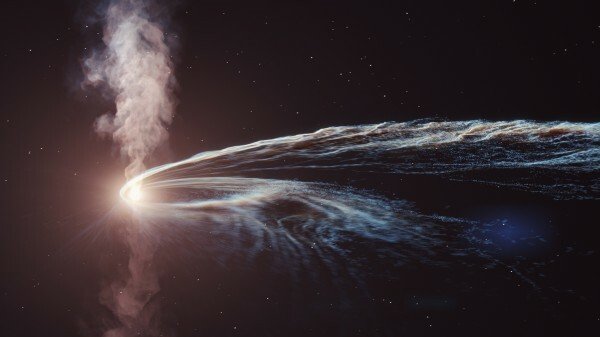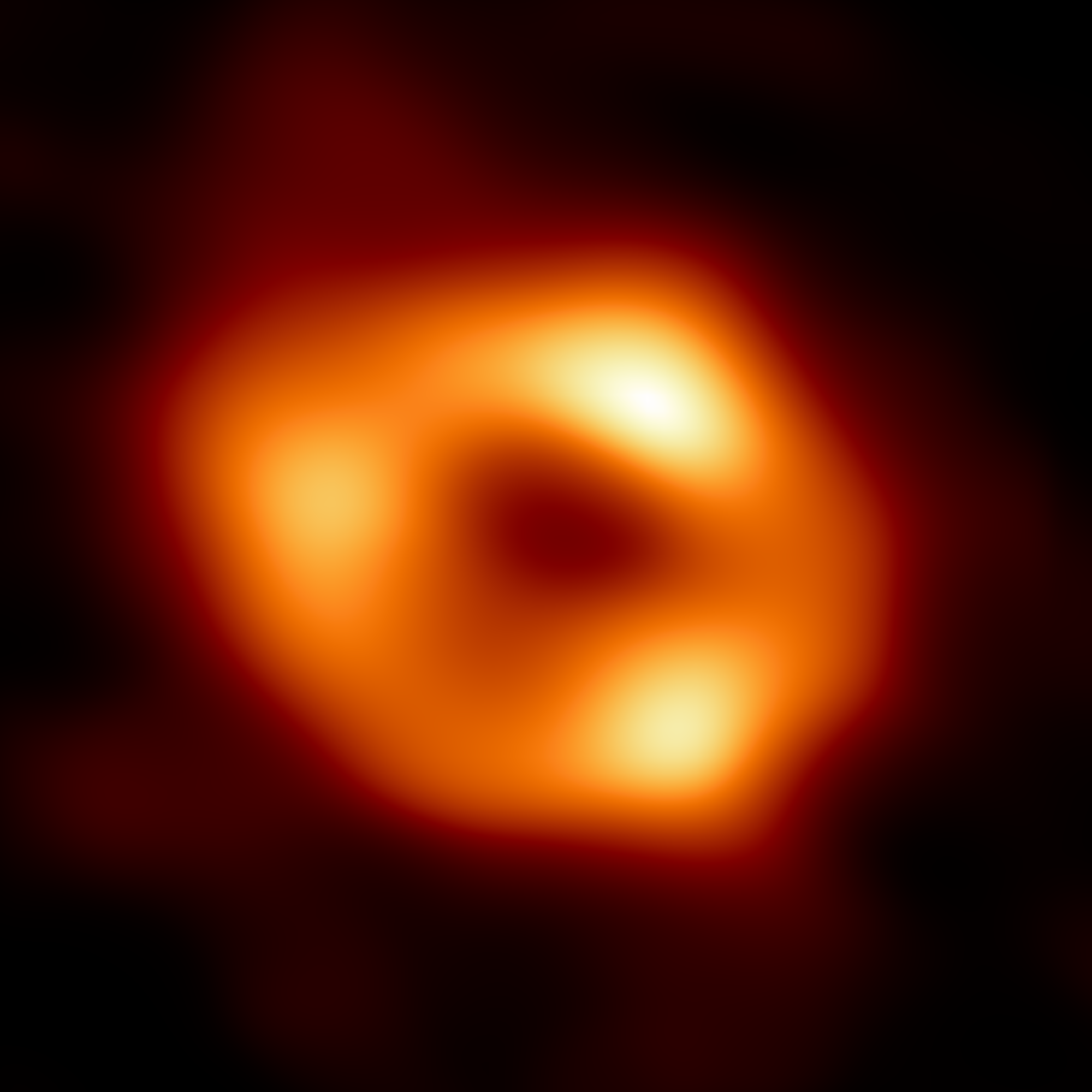
Astronomers have observed a supermassive black hole with a bad case of indigestion, apparently after shredding and eating a star.
The black hole, at the center of a galaxy some 665 million light-years from Earth, was caught vomiting or belching stellar bits about three years after it consumed a star that wandered too close. Scientists say because they’re not aware of the hole gobbling up any other stars since then, it must have been that October 2018 meal coming back to haunt it.
This is the first time researchers have ever witnessed a black hole with a delayed spewing of material after feasting. The discovery was published last week in the Astrophysical Journal.
“It’s as if this black hole has started abruptly burping out a bunch of material from the star it ate years ago,” said Yvette Cendes, lead author of the study at the Harvard and Smithsonian Center for Astrophysics, in a statement.
“It’s as if this black hole has started abruptly burping out a bunch of material from the star it ate years ago.”
Black holes are some of the most elusive things in outer space. The most common kind, called a stellar black hole, is often thought to be the result of an enormous star dying in a supernova explosion. The star’s material then collapses onto itself, condensing into a relatively tiny area.
But how supermassive black holes like this one—which is millions to billions of times more massive than the sun—form is even more mysterious. Many astrophysicists and cosmologists believe these behemoths lurk at the center of virtually all galaxies. Recent Hubble Space Telescope observations have bolstered the theory that supermassive black holes get their start in the dusty cores of starburst galaxies, where new stars are rapidly churned out, but scientists are still figuring it out.
Black holes don’t have surfaces, like a planet or star. Instead, they have a boundary called an “event horizon,” aka a point of no return. If anything swoops too close, it will fall in. Scientists have long said once material is swallowed, it can never escape the hole’s gravitational pull.
So how then would a black hole hurl bits of its meal if it allegedly has a cast iron stomach?

Credit: Event Horizon Telescope Collaboration
Want more science and tech news delivered straight to your inbox? Sign up for Mashable’s Top Stories newsletter today.
Actually, astronomers say it’s quite common for black holes to spill light immediately upon consuming a star, but they liken this to the holes being sort of messy eaters — missing their mouths as their gravitational forces stretch the star into heated spirals. That activity creates a flash that astronomers have observed with telescopes.
It’s the fact that this star apparently didn’t sit well with the black hole for such a long time that surprised them. Researchers have been studying these events with radio telescopes for more than a decade, said Edo Berger, a Harvard astronomy professor and co-author.
“There was radio silence for the first three years in this case,” Berger said in a statement. “And now it’s dramatically lit up to become one of the most radio luminous … ever observed.”
The discovery suggests that delayed outflows of light from a black hole after swallowing a cosmic object could be happening more often than thought.
